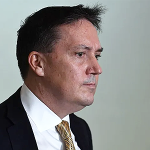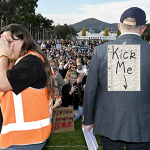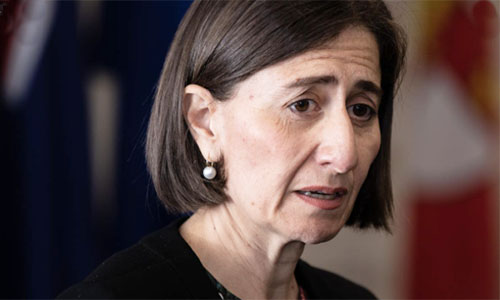The Middle East never fails to surprise. Sunday was no exception. Iranian president Ebrahim Raisi, foreign minister Hossein Amir-Abdollahian, and several other senior Iranian politicians were killed in a helicopter crash in East Azerbaijan. One cannot help but wonder at the extraordinary misfortune not only of crashing, but of doing so in a foggy, rainy, muddy area that took rescue workers 15 hours to reach. Despite the profile of the accident’s victims, however, this is probably not an accident that changes the course of history. The Iranian presidency has become increasingly irrelevant in an increasingly-Soviet system. That trend is set to continue.
The president is something of an afterthought
To understand the limited power of the Iranian presidency, it serves to recap the fundamentals of the Iranian system. The Islamic Republic is not comparable to the Soviet Union, with its anonymous, grey-suited politburos. It instead resembles an imperial court (or less charitably, Nazi Germany). The Iranian constitution is constructed around the figure of Supreme Leader Ali Khamenei. The vision of the Islamic Republic’s founder, Ruhollah Khomeini, is based on three simple arguments. The first is that the Twelfth Imam, who in Shi’a doctrine has been in hiding since 874CE, is the only conceivable legitimate ruler. The second is that in the Imam’s absence, it is the clergy – righteous people, fluent in Islamic law and its interpretation – that is most fit to rule. The third is that of those clerics, the most qualified of them should rule. This is strikingly similar to medieval Catholic claims that the Pope – a figure that used to have enormous temporal authority – was the ‘Vicar of Christ’, a literal stand-in for Jesus until the anticipated Second Coming.
Where does the president fit in such a system? As one might presume, the president is something of an afterthought. The function of the president is to carry out the day-to-day duties of governance, with as much leash as the Supreme Leader gives him. Over the last twenty years, however, that leash has gotten much tighter. For more than two decades, Khamenei has struggled with his presidents. The unclear role of the president has caused much confusion. In one way or another, all of Iran’s presidents have grown too big for their boots. Khamenei’s first president, Ali-Akbar Rafsanjani, was qualified enough to be Supreme Leader himself and nearly got the job. Under Rafsanjani’s presidency, the two clashed over Rafsanjani’s more liberal vision of economic and foreign policy. By the time Rafsanjani died in 2017, many – including his daughter – suspected that he was assassinated.
Mohammad Khatami, who was president from 1997 to 2005, launched a failed attempt to improve press freedom and relations with the United States. In doing so, he made an enemy of the Islamic Revolutionary Guard Corps (IRGC), who labelled him a traitor. The exposure of Iran’s nuclear weapons program and the Iraq War turned the tide against him. He is still thought to be under effective house arrest. In 2005, the ultraconservative Mahmoud Ahmadinejad took his place. He has since been marginalised from political life. His successor, Hassan Rouhani, was allowed to win to fix Iran’s ailing economy. The Iran nuclear deal led to some respite in 2015. But by 2018, the Trump administration reimposed comprehensive sanctions. Rouhani was always despised by IRGC hardliners. That sentiment was ultimately shared by Khamenei, who tied his hands for the final years of his premiership. Rouhani and his associates have also been banished from political life. In this respect, Raisi was an exception to the rule.
Raisi’s election was in many ways the ultimate sign that Khamenei and his inner circle were fed up with the competition. An associate of Khamenei for nearly 40 years, Raisi was the safest possible choice: a mild-mannered cleric with impeccable authoritarian credentials and minimal interest in foreign policy. All of his serious competitors were banned from running, allowing him to be elected with 42 per cent voter turnout – the lowest in Iranian history. It is still unclear what policy he carried out. Hardliners, who swept parliament in 2020 and 2024, have run domestic policy, implementing socially-conservative legislation favoured by Khamenei. Foreign policy, meanwhile, is run by the Supreme National Security Council and the Expediency Discernment Council, an advisory board to the Supreme Leader. Raisi was a member of both bodies. But again, it is the IRGC that has predominant influence in both and the Supreme Leader who decides.
As he approaches the end of his life, Khamenei has increasingly prioritised Iran’s culture wars, which he sees as the main threat to Iran’s unique theocratic system. Six in ten Iranians are under the age of 30. Internet penetration has risen from 13 per cent in 2010 to over 70 per cent today. As few as 30 per cent of young Iranians identify as observant Shia Muslims. Combine these statistics with low growth, high unemployment, and massive inflation and the long-term pressure on the stability of the regime is obvious. Khamenei’s answer has been to try and make Iran more ‘Islamic’ and less of a ‘republic’. The political theorist Khomeini valued public participation in politics. Khamenei cares less, and is more concerned with the state’s ability to enforce a positive moral vision and to extend the life of the state irrespective of popular opinion. To this end, he has leaned heavily on the Revolutionary Guard which, as we have written at Policy Exchange, increasingly acts as an Iranian shadow state. It is in this direction we must look to consider the future of the Islamic Republic.
Khamenei has increasingly prioritised Iran’s culture wars
Nearly every ideological project has an indoctrinated and loyal vanguard. In the Islamic Republic, it is the Revolutionary Guard. The closest structural parallel is the SS in Nazi Germany had it survived the war. Like the SS, it began as a group of gangs, underwent consolidation by war, has its own idiosyncratic culture, and is highly indoctrinated. Promotion is designed on ideological suitability, and loyalty is to the Supreme Leader and not, unlike the regular army, to the nation. It has its own courts and intelligence services and is responsible for internal order. Its proximity to the Supreme Leader allows it to dominate foreign policy and the economy. Its members are an economically privileged class, making it a clear political elite. The Supreme Leader depends on it, and it depends on the Supreme Leader. This is what makes discussions about proscribing the IRGC so facile: besides symbolic value, when we speak of the Guard, we speak of the Iranian state itself. That will be even more-so the case after Raisi’s demise.
Iran will hold elections in 50 days’ time – a year sooner than they would have been. Raisi’s stand-in, Mohammed Mokhber, is a career bureaucrat rather than a rising political star. He lacks the charisma or standing to be president for long. As was the case in 2020, Iran’s ‘deep state’ will fall behind a single candidate with a suitably hardline background. The names most mentioned by Iranian commentators give a sense of where the wind is blowing. Possible frontrunners include parliament speaker Mohammed Bagher Qalibaf, former parliament speaker Ali Larijani, and former defense minister Hossein Dehghan – all of them are hardliners and former generals in the IRGC. The outlier is the diplomat Saeed Jalili, who ran the Supreme National Security Council, and Alireza Zakani, who spent three decades in the Guard. If recent legislative elections are any indicator, turnout will be poor.
What matters is how little this now matters. As many commentators have pointed out, the Islamic Republic is undergoing a slow transformation into a Soviet-style military dictatorship. Raisi’s successor, whoever it is, will be a symptom of this transformation – another de-fanged suit – rather than a cause.











